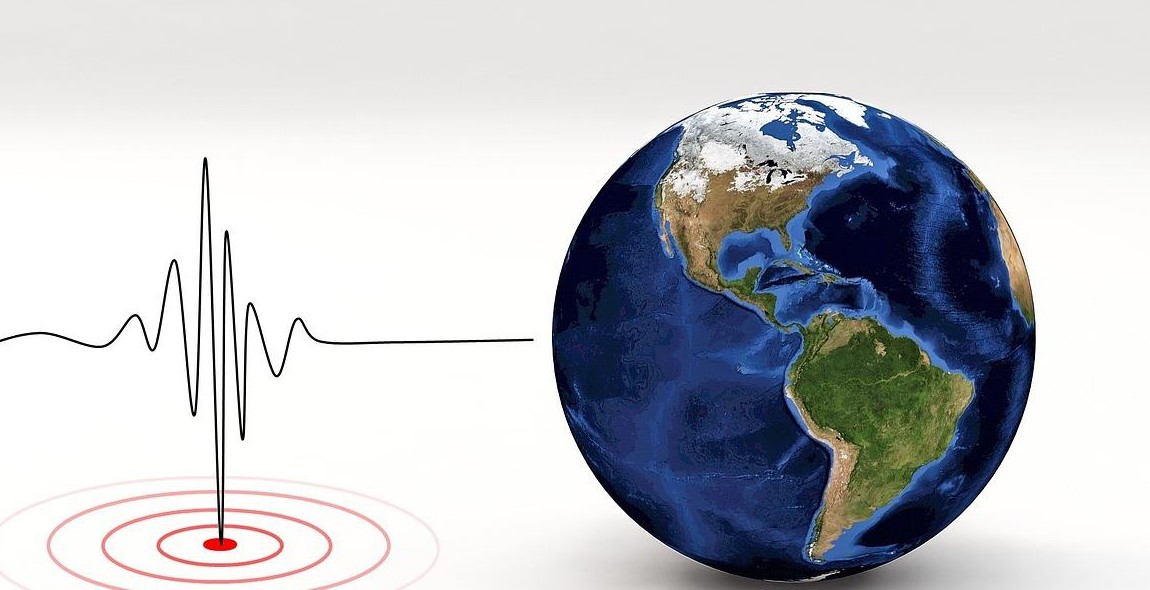How to Predict Earthquakes: Understanding Seismic Activity and Warning Signs
As someone who has experienced multiple earthquakes throughout my life, I understand how scary and unpredictable they can be. One moment everything is calm and the next, the ground beneath your feet is shaking violently. It’s a feeling that is hard to describe and even harder to forget.
Living in an earthquake-prone area, I’ve learned the importance of being prepared and understanding the warning signs of seismic activity. The ability to predict earthquakes is still a topic of ongoing research and debate in the scientific community. However, there are certain indicators that can help us anticipate when an earthquake may occur.
The Science of Seismic Activity
Earthquakes occur when two tectonic plates, which make up the earth’s crust, move against each other. This movement releases energy in the form of seismic waves, which cause the ground to shake. The strength and duration of an earthquake depend on the size and location of the fault line, as well as the depth and intensity of the seismic waves.
Warning Signs of an Earthquake
While earthquakes can occur without warning, there are certain signs that may precede seismic activity. These include:
- Unusual animal behavior
- Changes in groundwater levels
- Strange weather patterns
- Small tremors or foreshocks
It’s important to note that these signs may not always indicate an impending earthquake and should be taken in context with other factors.
Conclusion
Understanding seismic activity and warning signs can help us better prepare for earthquakes and potentially save lives. In this article, we’ll explore the current methods and technologies used to predict earthquakes and discuss the ongoing research in this field.
Understanding Seismic Activity
Earthquakes are a natural disaster that can cause significant damage to infrastructure and loss of life. Understanding the causes of earthquakes and the warning signs of seismic activity can help to predict and mitigate the impact of earthquakes.
What Causes Earthquakes?
Earthquakes are caused by the movement of tectonic plates. Tectonic plates are large pieces of the Earth’s crust that move slowly over time. When two plates come together, they can either slide past each other, collide, or move away from each other. The movement of these plates can cause stress to build up in the Earth’s crust, leading to earthquakes.
Types of Faults
There are three main types of faults that can cause earthquakes:
- Strike-slip faults: These occur when two tectonic plates slide past each other horizontally.
- Normal faults: These occur when two tectonic plates move away from each other, causing one plate to drop down relative to the other.
- Reverse faults: These occur when two tectonic plates collide, causing one plate to move up and over the other.
Plate Tectonics and Earthquakes
Plate tectonics is the theory that explains the movement of tectonic plates. This theory helps to explain why earthquakes occur in certain areas and why some areas are more prone to seismic activity than others. For example, the Ring of Fire is a region around the Pacific Ocean where many earthquakes and volcanic eruptions occur. This is because the tectonic plates in this area are particularly active and prone to movement.
| Type of Fault | Movement |
|---|---|
| Strike-slip | Horizontal |
| Normal | Vertical |
| Reverse | Vertical |
Understanding the causes and warning signs of seismic activity is crucial for predicting earthquakes and minimizing their impact. By studying plate tectonics and fault lines, scientists are able to make predictions about where and when earthquakes are likely to occur.

Warning Signs of an Earthquake
Earthquakes are natural disasters that can strike suddenly and without warning. However, there are some warning signs that can help you predict an earthquake before it happens. Here are some of the most common warning signs:
Foreshocks and Aftershocks
Before a major earthquake, there are usually a series of smaller earthquakes, known as foreshocks. These foreshocks can occur days, weeks, or even months before the main earthquake. Similarly, aftershocks can occur after the main earthquake, and they can be just as dangerous as the initial earthquake. If you feel any tremors or small earthquakes, it’s important to take them seriously and prepare for a potential larger earthquake.
Changes in Animal Behavior
Animals have an incredible ability to sense changes in the environment, including seismic activity. Before an earthquake, animals may exhibit unusual behavior, such as acting restless or agitated. You may also notice birds flying low to the ground or animals fleeing an area. If you notice any unusual animal behavior, it’s important to pay attention and take precautions.
Ground Deformation and Cracks
Before an earthquake, the ground may start to deform or crack. This can be caused by the movement of tectonic plates beneath the surface. If you notice any cracks in the ground or changes in the landscape, it’s important to be cautious and prepare for a potential earthquake.
Unusual Geological Phenomena
In addition to ground deformation and cracks, there may be other unusual geological phenomena before an earthquake. This can include changes in the color or temperature of bodies of water, or the appearance of steam or gas from the ground. If you notice any unusual geological phenomena, it’s important to take them seriously and prepare for a potential earthquake.
By paying attention to these warning signs, you can take steps to prepare for an earthquake and protect yourself and your loved ones.

Measuring Earthquakes
Measuring earthquakes is an essential aspect of predicting seismic activity and issuing timely warnings to people in the affected areas. There are three primary scales used to measure earthquakes, and they include:
The Richter Scale
The Richter Scale is the most common scale used to measure the magnitude of an earthquake. It was developed by Charles Richter in 1935 and measures the amplitude of the seismic waves produced by an earthquake. The scale ranges from 1 to 10, with each whole number representing a tenfold increase in the magnitude of the earthquake. For example, an earthquake with a magnitude of 5 is ten times stronger than one with a magnitude of 4.
The Moment Magnitude Scale
The Moment Magnitude Scale is a newer and more accurate way of measuring earthquakes. It measures the amount of energy released by an earthquake, taking into account the size of the fault that caused it. The scale ranges from 1 to 10, just like the Richter Scale, but it can also measure earthquakes with magnitudes greater than 10.
The Modified Mercalli Intensity Scale
The Modified Mercalli Intensity Scale measures the intensity of the shaking caused by an earthquake. It takes into account the damage caused by the earthquake to buildings, roads, and other structures. The scale ranges from I to XII, with I being the weakest and XII being the strongest. The scale is not based on any measurements but relies on observations made by people who experienced the earthquake.
Each of these scales is useful in predicting earthquakes and assessing their impact on people and structures. By combining data from these scales, scientists can get a better understanding of the severity of an earthquake and issue timely warnings to people in the affected areas.
Predicting Earthquakes
Earthquakes are one of the most unpredictable natural disasters, but scientists have made significant progress in understanding seismic activity and warning signs. While earthquakes cannot be predicted with complete accuracy, there are current methods used to forecast and prepare for potential earthquakes. Let’s explore the current state of earthquake prediction and what the future holds.
Can Earthquakes Be Predicted?
Earthquake prediction is a challenging task for scientists because of the complexity of the Earth’s crust. However, scientists have been able to identify some warning signs that may indicate an impending earthquake. These warning signs include seismic activity, changes in the water level of wells, and changes in the behavior of animals.
While the accuracy of earthquake prediction is not perfect, it is still essential to understand the methods used to prepare for potential earthquakes. These methods can help reduce the impact of an earthquake and save lives.
Current Methods of Earthquake Prediction
One of the most common methods used to predict earthquakes is seismology. Seismologists use seismographs to measure seismic activity and detect any changes in the Earth’s crust. This data is then analyzed to predict the likelihood of an earthquake occurring.
Another method used to predict earthquakes is GPS monitoring. GPS data can detect any changes in the Earth’s crust, such as movement or deformation, which may indicate an earthquake is imminent.
Other methods used to predict earthquakes include studying historical earthquake patterns, monitoring changes in the Earth’s magnetic field, and analyzing satellite imagery.
The Future of Earthquake Prediction
The future of earthquake prediction is exciting, with new technologies and methods being developed to improve accuracy. One of these methods is machine learning, which can analyze vast amounts of data to predict earthquakes with greater accuracy.
Another emerging technology is the use of drones to monitor changes in the Earth’s surface. Drones can capture high-resolution images and detect any changes in the Earth’s crust, which can help predict earthquakes.
Overall, while earthquake prediction is still an imperfect science, scientists are making significant progress in understanding seismic activity and developing new methods to predict earthquakes. It is essential to stay informed and prepared for potential earthquakes to reduce their impact and save lives.
Conclusion
Earthquakes are natural disasters that can cause significant damage to property and loss of life. Understanding seismic activity and warning signs is essential to predicting earthquakes and minimizing their impact on society.
Key Takeaways
- Seismic activity is the result of the movement of tectonic plates beneath the earth’s surface.
- Earthquake prediction is challenging due to the complexity of the earth’s crust and the unpredictability of seismic activity.
- Scientists use a variety of tools, including seismographs and GPS, to monitor seismic activity and predict earthquakes.
- Warning signs of an impending earthquake include changes in animal behavior, unusual weather patterns, and changes in the earth’s magnetic field.
What You Can Do
While earthquakes cannot be prevented, there are steps you can take to prepare for them and minimize their impact:
| Before an Earthquake | During an Earthquake | After an Earthquake |
|---|---|---|
|
|
By understanding seismic activity and taking steps to prepare for earthquakes, you can help protect yourself, your family, and your community.
